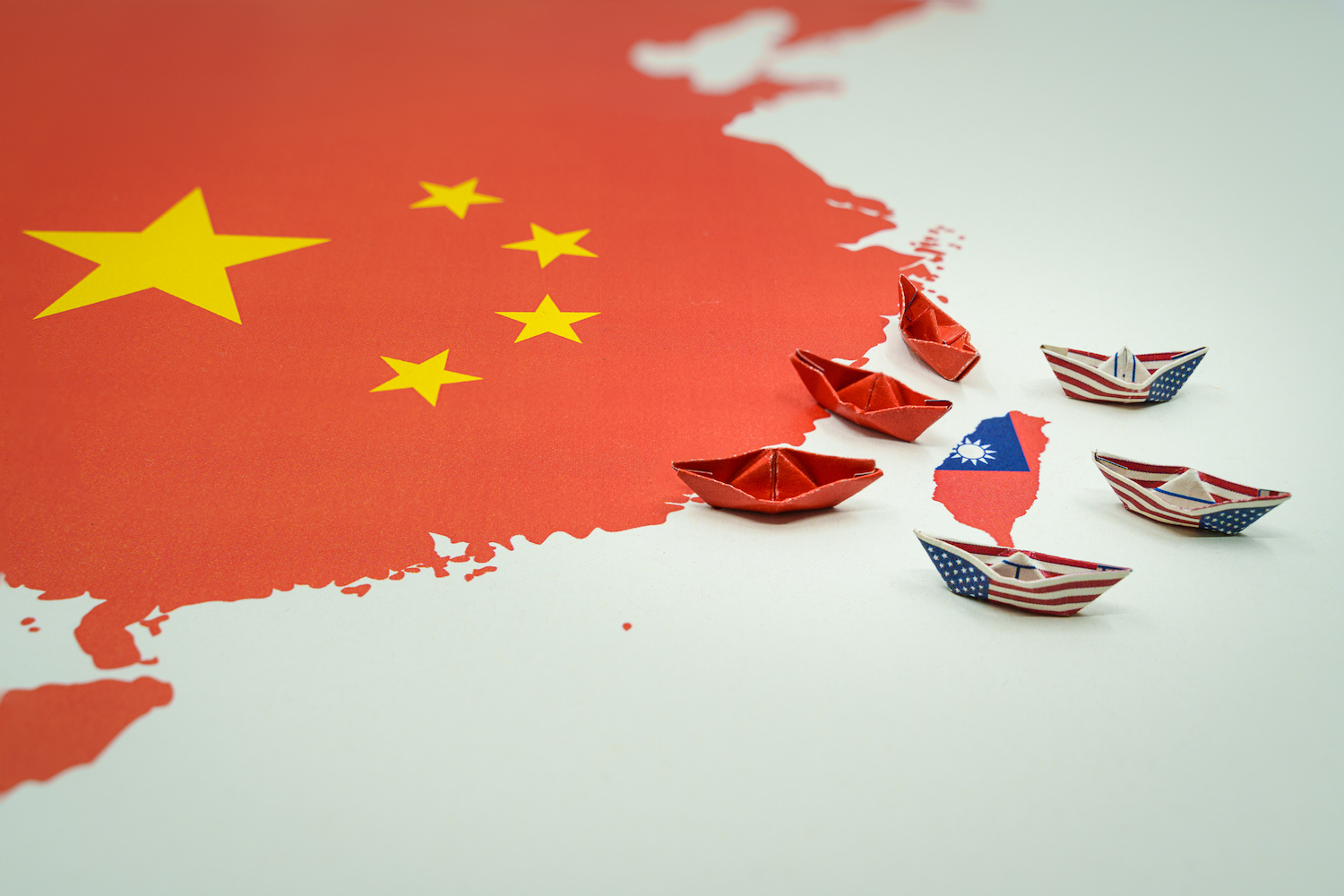China is seen as a country with the greatest potential to compete with the United States in order to put an end to the unipolar world order in the international arena. Such a conclusion is caused by China’s rapid economic development, technical and technological achievements, and international political ambitions. An example is Beijing’s desire to invade Taiwan by force or the Belt and Road Initiative. However, although the above two foreign policy plans of China are united under the goal of turning the country into a global superpower, they are significantly different from each other from a geopolitical point of view. This is a dilemma that needs to be resolved for China’s next plans.
Sea or land power
The geopolitical analysis divides the military capabilities of states into two large groups: sea powers and land powers. Powerful and historical empires mainly have characteristics belonging to one of these two groups. Historically, states possessing both types of armed forces are rare. For example, despite the Ottoman Empire having an army specialized in land, it was able to conduct successful battles at sea during the time of the Barbarossa brothers. Another example was when the Roman Empire defeated Carthage at sea in the First Punic War. However, the Roman Empire was a land power.
On the contrary, there are many historical instances of the defeat of powerful states of sea power in land battles, and of powerful states on land in naval battles (sometimes by countries that seem to be weaker than them). For example, the defeat of the Persian army in the Strait of Salamanca in the Greco-Persian War, the unsuccessful attempts of Britain in Afghanistan (a similar situation was repeated with the USA in the 21st century), the defeat of the Russian fleet in Tsushima (the defeat of the Japanese army at Khalkhing Gol on the eve of the World War II) and others.
Historical analysis shows that it is almost impossible for a country to build an army that can successfully operate both on land and at sea. Even modern China may not be excluded from the truth. However, Beijing faces the task of solving the problem of Taiwan in the east by sea, and the problem of East Turkestan and Tibet in the west with success on land. And China’s choice could decide what kind of country it will be formed geopolitically in the future.
Taiwan and Sea power
The civil war in China in 1949 did not end with the complete reunification of China. The Kuomintang government remained on a small island southeast of the mainland. In addition, this government’s close cooperation with China’s rival, the United States, may hinder Beijing’s geostrategic plans internationally.
First of all, the fact that Taiwan is located in the sea and has improved its military potential will create enough problems for Beijing to annex this island. Since its establishment, the communist government has never carried out a large-scale military naval operation. Looking back at China’s long history, there is no great success after Zheng He’s naval voyage.
“According to Alfred Mahan’s Sea Power Theory, straits and ports wage major strategic values. They can improve the belonging nation’s naval combat power or disperse its maritime power. Taiwan’s geographical location and geopolitical values entitled it to possess such strategic values, both to China in terms of national security purposes and to the United States in terms of being a key puzzle piece to containing China’s resurgence efforts and global influence”, — writes Yipei Lu in US-China Today.
In this case, China may not be able to become a global power without fully unifying the island of Taiwan. Because geographically, the chain of islands starting from the north of Japan and ending in Malaysia can suffocate China’s free military, economic and trade routes to the sea. It is almost impossible to become an international leader without the opportunity to sail in international waters. As a result, Beijing has to try to break this chain sooner or later.
The second factor motivating the Communist government in Mainland China to annex Taiwan is the ideological and legal factors. It is known that the Yalta system, which serves as the basis for current international relations, was signed by the government of the Republic of China on behalf of China. It is necessary for Beijing to write a comprehensive ideological history in domestic politics, and to prove itself to the world community as one of the participants of the current world order in foreign policy. The pursuit of global hegemony increases the need for legal and ideological arguments before the world community. As a result, mainland China will be forced to occupy the island.
Thirdly, negative trends in the Chinese economy may encourage Beijing to move towards Taiwan. First of all, when coming out of quarantine during the COVID-19 pandemic, China chose its “Zero COVID” policy. However, this social policy became an excessive burden on the Chinese economy and prevented the formation of natural immunity of the population against the coronavirus. The Guardian brings a few pieces of data to prove the economic outcomes of the zero-COVID policy. For example, it is alleged that China’s GDP is supposed to grow by 3.2% in 2022, well below the official target of 5.5%. This would make 2022 the slowest year for GDP growth in more than 40 years, excluding the Covid-affected rate in 2020.
On the other hand, the demographic growth rate of the Chinese population has entered the stage of change. In its China Power Project, the Center for Strategic and International Studies provides analysis that “the share of the elderly age group is expected to increase in the population in a few decades. Greater life expectancy, combined with lower fertility rates, has resulted in a rapidly aging society, and the problem will only intensify. For a country whose economy remains reliant on affordable sources of labor to drive its manufacturing sector, China’s aging working population presents a serious economic problem. These shifts will lead to reduced productivity, and as China’s large surplus labor pool begins to dwindle, manufacturing wages will increase and the sector will decrease in profitability”. This will affect negatively the social protection system.
The last negative economic factor is the growth of inequality. The eastern regions near the sea are developing faster than the western provinces. In addition, the introduction of partial market relations has created large entrepreneurs among the population. Social inequality is contrary to the main idea of China based on social equality — communism. In the end, there is a possibility that the option of war against Taiwan will be chosen by Beijing as a way to hide economic and social problems.
Finally, Taiwan’s success in the semiconductor industry is attracting Beijing. Entering technological competition with the United States requires ownership of Taiwan Semiconductor Manufacturing Company (TSMC), the world’s largest chipmaker. In minimal conditions, it is necessary to destroy it as soon as possible so that it is not completely occupied by the opponent. Otherwise, China will find itself several years behind in the technical and technological race with the United States.
Some facts by Council on Foreign Relations show that Taiwan dominates the production of semiconductors, with its companies holding 68 percent of the global market share, while TSMC produces around 90 percent of the world’s leading-edge semiconductors. It means that any move by Beijing to Taiwan causes destructive industrial consequences for the US, China’s Cold War opponent.
Due to the above factors, going to war against Taiwan will put necessity on China to build a fleet that can operate effectively at sea. Taking into account China’s actual potential, it is possible for Beijing to fulfill this task. However, as a result of the annexation of Taiwan and the opening of the way to the wide seas, China may become a maritime power and lose the ability to successfully move on land. Ultimately, China’s western regions could become more fragile points.
Westlands and land power
There are two major problem areas in the west of China — East Turkestan and Tiber. China’s transportation map shows that both areas are very weakly connected to the eastern industrial zones and political centers where the Han people live. To reach Eastern Turkestan, one has to cross a long distance through the Gobi Desert. The desert climate constantly affects the quality of transport roads. Also, as a result of desertification, East Turkestan is becoming more and more separated from the area where the Han people live naturally.
Nature reports that China’s desertification-prone region stretches from Central Asia in the western direction to north-eastern China in the eastern direction, covering an area of more than 1.2 million km2. According to National Geographic, 27.4 percent of China is currently desertified land, affecting about 400 million people. In parallel to the expansion of Gobi, the possibility of retaliation of “Mali syndrome”, a country whose control over desert areas has weakened, increases.
There is almost a similar problem to reach Tibet. It is necessary to move through the mountains in an inconvenient logistical direction. Only the G318 road leads here. In the context of the Tibetan independence movement and the border rivalry with India, this is a rather tenuous link. The beginning of the Yangtze and Huanghe Rivers, which are one of the most important foundations of Chinese civilization, from the Tibetan mountains increases the strategic importance.
Somehow, it is worth noting that Beijing has gone further in this direction, unlike Taiwan. The Belt and Road Initiative promoted by Beijing may be the next revolution in the history of geopolitics. The discovery of the American continent and the sea route to India, the circumnavigation of the world by Magellan, and the achievements in the field of shipbuilding had a negative impact on the economy of the land states of Asia from the 16th century. Since this century, the main global hegemons have become sea powers. These are Spain, England (later Great Britain), and the USA. It is because the largest economic relations are carried out through sea routes.
China’s Belt and Road Initiative connects East Asia, Central Asia, East Asia, Eastern, and Central Europe through railway lines and allows for large-scale trade relations. As a result, dependence on the system of sea trade routes will be further reduced, which will seriously damage the interests of the United States and Britain. China’s position in the Western regions of its territory will also be strengthened.
The invention of a new generation of railways and trains, the modernization of the system, and the increase in trains’ speeds will move the possibilities of international trade by land in a positive direction. Noemi Capelli writes that President Xi Jinping has made high-speed rail exports a top priority, turning it into one of China’s most successful large-scale infrastructure initiatives that connects BRI countries and promote economic exchanges. The historical development of China also shows that the Han people were very successful on land.
However, China’s transformation into a land superpower does not allow it to solve the problem of Taiwan in the east. The country’s maritime capabilities will remain limited and the Japan-Malaysia island chain will remain intact. A powerful maritime power is needed to directly threaten the US. As a result, the Chinese bloc will become a huge “fortress” occupying the Eurasian continent and a large part of Africa, and will not be able to directly threaten the interests of the United States (except for the ballistic missile war).
In conclusion, China, which is moving towards global hegemony, is facing a geopolitical choice — either to develop as a sea power or as a land power — that has not been fully resolved by its predecessors.
Key words: China
GRS/CHINA




